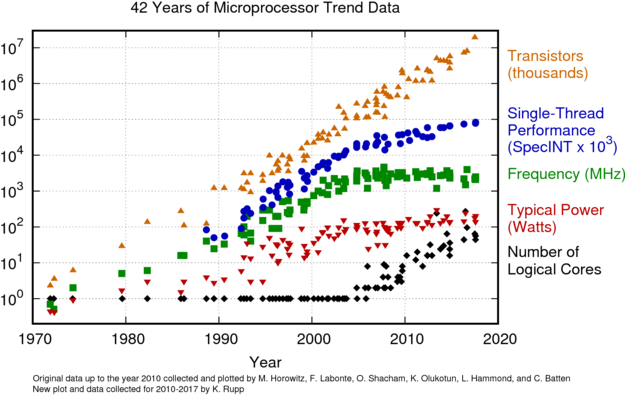In the following I will provide a frequently requested update to my former 40 Years of Microprocessor Trend Data post.
Two years of additional data do not seem to matter much. However, people are watching transistor counts and whether Moore's Law is about to fade. Most notably, Intel no longer releases the number of transistors in their processors. Also, some of their processors were introduced much later than initially scheduled, and their Tick-Tock model has been modified to include refreshes. Regardless, with the transistor counts for AMD Epyc and IBM's Power 9 we obtain the following updated plot:

Clearly, transistor counts still follow the exponential growth line. AMD's Epyc processors with 19 billion transistors contribute the highest (publicly disclosed) transistor counts in processors to-date. For comparison: NVIDIA's GP100 Pascal GPU consists of 15 billion transistors, so these numbers are consistent. With the upcoming introduction of 10nm process nodes it is reasonable to assume that we will stay on the exponential growth curve for transistor counts for the next few years. These additional transistors will provide more cores, while the gains we see for SpecINT to measure single-threaded performance are primarily due to compilers employing auto-vectorization and auto-parallelization. Thus, if you want to benefit from future processors over what you have now, make sure to have parallel workloads. 🙂
The raw data is available in the Microprocessor trend data repository available at GitHub.